#commodore 64 tetris
Text
I'm pretty sure SEGA is going to sleep on the 26 minute long banger composed by Wally Beben that took up 1/5th of the Commodore 64's available space for Puyo Puyo Tetris 3
4 notes
·
View notes
Photo


Tetris (C64, 1988)
2 notes
·
View notes
Note
What is the appeal of vintage computers to you? Is it the vintage video games or is it the programs? If so, what kind of programs do you like to run on them?
Fair warning, we're talking about a subject I've been passionate about for most of my life, so this will take a minute. The answer ties into how I discovered the hobby, so we'll start with a few highlights:
I played old video games starting when I was 9 or 10.
I became fascinated with older icons buried within Windows.
Tried to play my first video game (War Eagles) again at age 11, learned about the hardware and software requirements being way different than anything I had available (a Pentium III-era Celeron running Windows ME)
I was given a Commodore 1541 by a family friend at age ~12.
Watched a documentary about the history of computers that filled in the gaps between vague mentions of ENIAC and punch cards, and DOS/Windows machines (age 13).
Read through OLD-COMPUTERS.COM for the entire summer immediately after that.
Got my first Commodore 64 at age 14.
I mostly fell into the hobby because I wanted to play old video games, but ended up not finding a ton of stuff that I really wanted to play. Instead, the process of using the machines, trying the operating system, appreciating the aesthetic, the functional design choices of the user experience became the greater experience. Oh, and fixing them.
Then I started installing operating systems on some DOS machines, or playing with odd peripherals, and customizing hardware to my needs. Oh, and programming! Mostly in BASIC on 8-bit hardware, but tinkering with what each computer could do is just so fascinating to me. I'm in control, and there isn't much of anything between what I write and the hardware carrying it out (especially on pre-Windows machines)! No obfuscation layers, run-times, .dlls, etc. Regardless of the system, BASIC is always a first choice for me. Nova, Ohio Scientific, Commodore, etc. I usually try to see what I can do with the available BASIC dialect and hardware. I also tend to find a game or two to try, especially modern homebrew Commodore games because that community is always creating something new. PC stuff I focus more on pre-made software of the era.
Just to name a few examples from a variety of systems: Tetris, terminal emulators, Command & Conquer titles, screen savers, War Eagles, Continuum, video capture software, Atomic Bomberman, demos, LEGO Island, Bejeweled clones, Commander Keen 1-3, lunar lander, Galaxian, sinewave displays, 2048, Pacman, mandelbrot sets, war dialers, paint -- I could keep going.
Changing gears, I find it funny how often elders outside of the vintage computing community would talk about the era I'm interested in (60s-early 90s). [spoken with Mr. Regular's old man voice]: "Well, computers used to be big as a room! And we used punch cards, and COBOL!" I didn't know what any of that meant, and when pressed for technical detail they couldn't tell you anything substantial. Nobody conveyed any specifics beyond "that's what we used!"
I noticed that gaps remained in how that history was presented to me, even when university-level computer science and history professors were engaged on the subject. I had to go find it on my own. History is written by the victors, yeah? When was the last time a mainstream documentary or period piece focused on someone other than an Apple or Microsoft employee? Well, in this case, you can sidestep all that and see it for yourself if you know where to look.
Experiencing the history first hand to really convey how computers got from point A to B all the way down to Z is enlightening. What's cool is that unlike so many other fields of history, it's near enough in time that we can engage with people who were there, or better yet, made it happen! Why do you think I like going to vintage computer festivals?
We can see the missteps, the dead-ends, the clunkiness, the forgotten gems and lost paradigms, hopefully with context of why it happened. For the things we can't find more information on, when or documentation and perspectives are limited, sometimes we have to resort to digital archeology, and reverse engineering practices to save data, fix machines, and learn how they work. The greater arc of computer history fascinates me, and I intend to learn about it by fixing and using the computers that exemplify it best, and sharing that passion with others who might enjoy it.
168 notes
·
View notes
Text
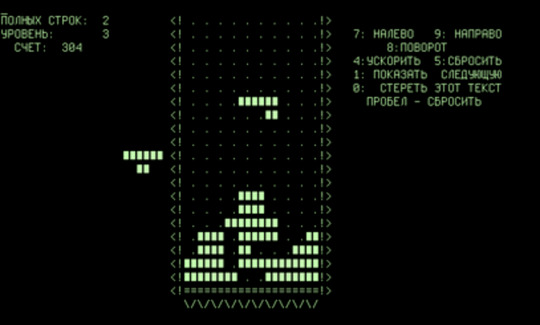
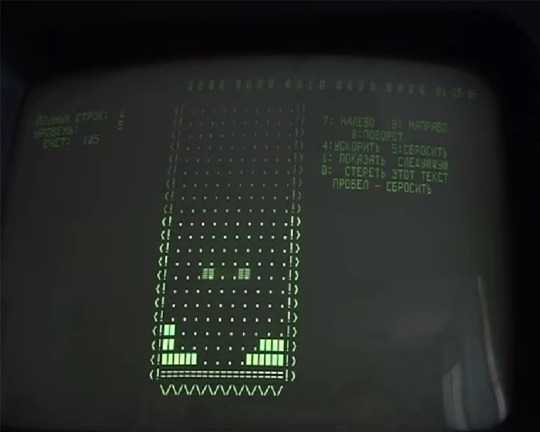




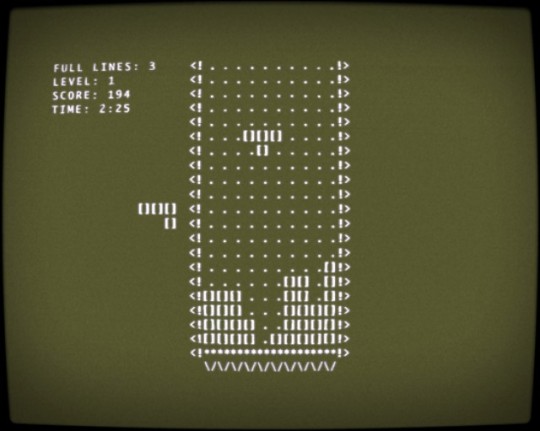
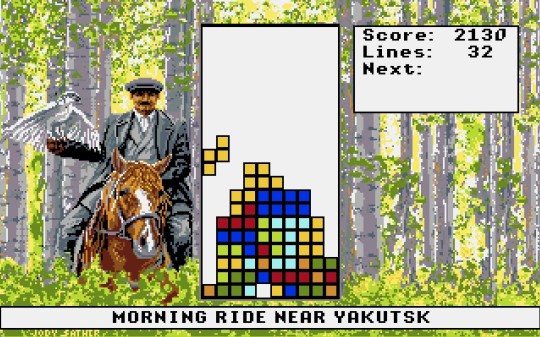
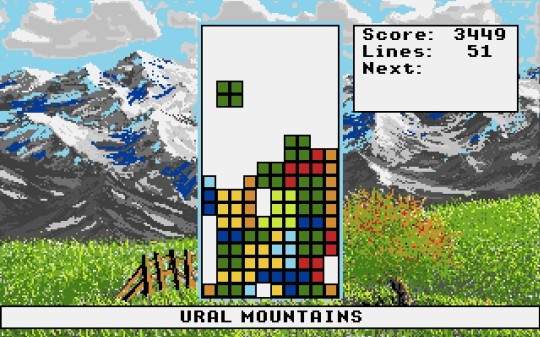


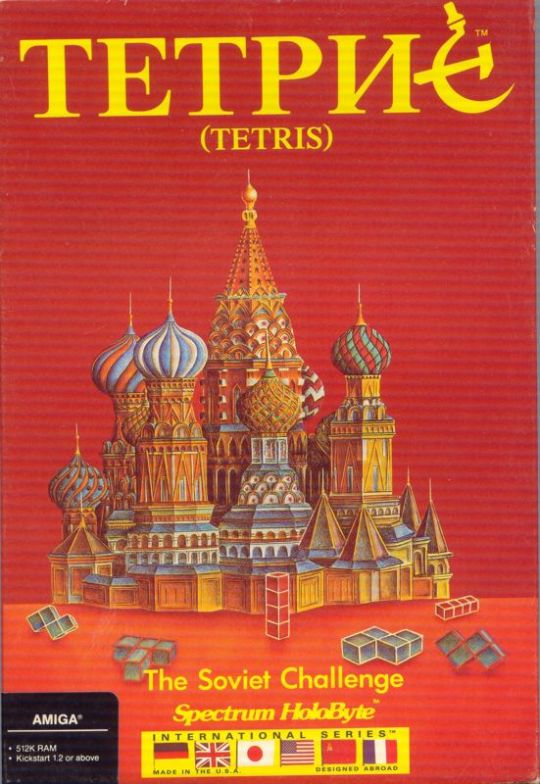
152.) Tetris
Release: June 6th, 1984 | GGF: Puzzle, Arcade | Developer(s): Alexey Pajitnov | Publisher(s): Mirrorsoft, Spectrum HoloByte, Bullet-Proof Software, SEGA, Atari Games Corporation, Tandy, Nintendo Co., Ltd., Tengen, Microsoft Corporation, Philips, Blue Planet Software, Intelligent Systems Co., Ltd., Jaleco, SETA Corporation, Arika, Capcom Co., Ltd., Hasbro Interactive, Ericsson, Crave Entertainment, Activision, Inc., WOW Entertainment, Psikyo, THQ Inc., Vanguard, Success, AQ Entertainment, Electronic Arts, Inc., GungHo Online Entertainment, Tetris Online, PopCap Games, Majesco, Ubisoft Entertainment, Enhance, Gameloft, Red Bull, Sanrio, N3TWORK | Platform(s): Mainframe (1984), Elektronika 60 (1985), DOS (1986), Arcade (1988), Amstrad CPC (1988), Amstrad PCW (1988), Apple II (1988), Apple IIgs (1988), Atari ST (1988), BBC Micro (1988), Commodore 64 (1988), Electron (1988), Famicom (1988), FM-7 (1988), IBM PC (1988), Macintosh (1988), MSX (1988), MSX2 (1988), PC-88 (1988), PC-98 (1988), Sharp X86000 (1988), TRS-80 CoCo (1988), ZX Spectrum (1988), Game Boy (1989), Genesis (1989), NES (1989), Windows (1990), CD-i (1991), SNES (1994), PlayStation (1995), SEGA Saturn (1996), Virtual Boy (1996), Dreamcast (1998), Nintendo 64 (1998), Ericsson T28 (1999), Game Boy Color (2000), Ericsson T28m (2001), Nuon (2001), WonderSwan Color (2002), SwanCrystal (2002), Game Boy Advance (2003), Xbox 360 (2005), Mobile (2006), Nintendo DS (2006), iPod (2006), Facebook (2008), Wii (2008), Nintendo DSi (2010), Android (2011) BlackBerry (2011), Nintendo 3DS (2011), PlayStation 3 (2011), PSP (2011), Windows Phone (2011), Fire OS (2014), Ouya (2014), PlayStation 4 (2014), PS Vita (2014), Xbox One (2014), Nintendo Switch (2017), J2ME (2018), Oculus/Meta Quest (2018), Browser (2019), SEGA Genesis Mini (2019), PlayStation 5 (2020), Xbox Series (2020)
43 notes
·
View notes
Note
Wanna know the 26 minute chiptune banger that was made for tetris and it took up like 1/5 of the commodore 64's available system space?
Yes 👁️👁️
5 notes
·
View notes
Text
ALSO, while sifting through my grandma’s old stuff in her small warehouse, i found a Commodore 64 !!! i know virtually (haha) nothing about actual computer hardware BUT i know i can play Tetris on that mf so as soon as i get my room all settled i’m bringing in it :3 even if it doesn’t work, it’s a piece of history and i want to make sure it’s protected
1 note
·
View note
Text
Cross Verbix v1.0 (Commodore 64) (C64) (Game)

Cross Verbix v1.0 (Commodore 64) (C64) (Game)
Cross Verbix by Fabrizio Caruso is a word game similar to Scrabble and Tetris. This game is for the Commodore 64....
Read the full article
0 notes
Text
idk if anyone would care to hear but i've been listening to A LOT of commodore 64 music lately
i used to do it a lot when i was like 13-14 and i've been doing it again (well, i started doing it again when i was 17)
my personal favorite soundtracks are from cybernoid, r-type, supremacy, the last ninja 2, tetris, auf wiedersehen monty, and outrun :3
0 notes
Video
youtube
I don’t know if you, dear reader, ever had the pleasure of playing Tetris on a Commodore 64 but, if you didn’t, may I introduce you to the music that accompanied that gameplay? The SID music here was composed by Wally Beben and I suggest just putting down whatever it is you were doing to give this 25 minute score your attention. It goes places. Follow that journey.
I also came across about 11 hours of C64 SID music that has some interesting compositions buried in there. There’s some slightly jarring transitions from soothing flow to bouncy rhythm that threw me from mood to mood but that’s a me problem. I would be forced to re-focus and pay attention again, finding myself digging the new musical direction.
Oh, I also came across a SID music archive that you can use if you want (but read that copyright warning). Here’s a bit of history on the SID chip from this site:
“What exactly is a Commodore 64 (C64) SID tune? Basically it is music originally generated on the C64, a popular family computer from the '80s. The C64 was undoubtedly ahead of its time offering many advanced features for a relatively cheap price. One particular advanced feature on the C64 was the Sound Interface Device (SID) chip developed in 1982 by Bob Yannes. The remarkable capabilities of this chip caused a revolution in the computer music industry. The chip was so revolutionary in fact that Byte Magazine named the chip one of the Top 20 most important chips in computing history (see Byte's 20th Anniversary tribute edition, 1996).”
391 notes
·
View notes
Text

LEARNBLR #6, the MINIX 3 book + full-stack madness
Hy comrades, Klara here with a closer to final ZealOS color ricing. And yes I finally got the MINIX3 book at home a few days ago. Quite happy of such as I intend to dive deeper into such once I am ready, alongside the "NAND to Tetris" companion book.
The current context & study program timings won't stop me from learning of the strenghts and drawbacks of much existing infrastructure and designs, as I still feel like a vast niche market is still left up to grabs as far as computation goes. And customizing so much of a tech deque of computational framework would be preferable to the affordable but ethically doubtful option to bear only to hacking such a exisiting one. No offense to such tinkerers as they still deserve much of my praises and in fact, I do aim forward to such tech enthusiasts worldwide as to redemocratize direct & transparent technologies.
So let me explain. Before the nineties, we had way less quantities of memory, but we got more variety and a few direct computation brands (Commodore 64, Apple II & DECmate III being sample computer systems I think most when I think of such terms). Right now, we got some nice standards and memory abundance but now much is abstracted away from even developers, systemic issues plague the homogeneous market of 64-bit architectures and a handful of similar contemporary legitimate concerns to debate over.
I decided to bring such change by my hands, and while I still am seeking people who are quite deeper into computing hardware (most likely electronics but alot of historical hardware methodologies are to be expected) and analog medias of days almost gone now.
It is still extremely early but I take major hints from the TempleOS' main forks that are ZealOS & Shrine with additional inspirations like Windows 3.1x GUI, MINIX3/PLAN9 standards, DECmate III+'s all-in-one package, Intersil 6120 processor family & openPOWER + openSPARC architectures.
Quickly summarized, it is a 12-bit tribble home computer system, and the MVP (minimum viable product) would probably contain around 144KW (32-144 kilo-tribbles but I prefer kilo-word for better interoperability with bytes and nibbles) of "live" RAM memory. And it's primary goal is to host a retro-optimized multimedia OS that has a similar feel to other 8-bit new wave micros. It has twelve generic 12-bit registers that are not conventionally named (A to F & U to Z letters as such generic register names) and four special registers akin to the PDP-8-inspired Intersil 6120's.
But remember, the main goal is less to make it big computing framegmeted mess initially (like how Linux distros and kernel are as of right now), but rather to give ways for the computer enthusiasts and non-English communities to take ownership of their computer as to learn/tinker all sorts of cool workflows. And yes, that includes slavic tech communities of the Russian kinds, amerindian peoples, Inuits and constructed world peers. Part of why I chose 12-bit as the word rather than 8-bit is exactly to ease in encoding of customized charsets (think of such as a alternative to UTF-8) and of course to learn to tinker differently than just throw the usual 8-bit bytes around. Still aiming for 8-bit (& also 6-bit units because of some worldbuilding-relevant samples) compatibilities eventually but that's far in the roadmap.
Small extras for those who read to the end of this article:
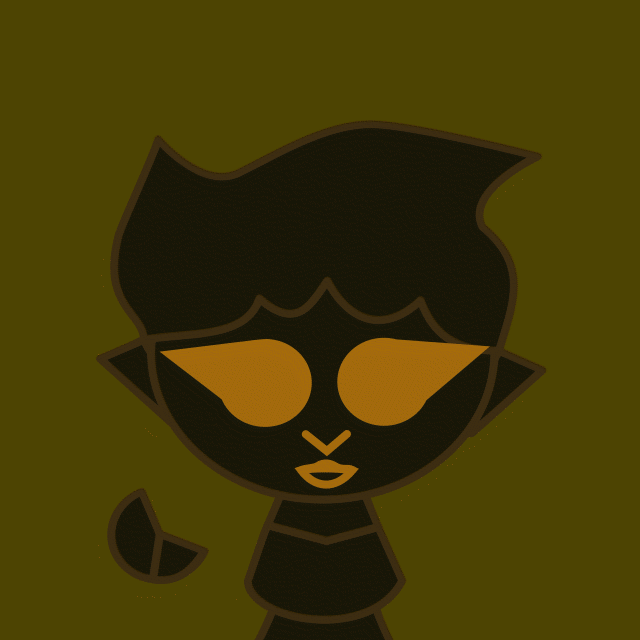
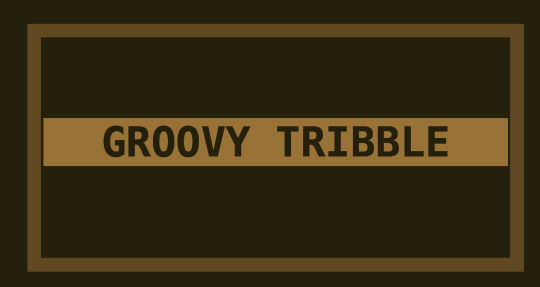
#maskoch#servitor#16^12#TempleOS#MINIX3#NAND to Tetris#retro computing#customization#taking commisions#computer hardware manufacturing#computer graphics
2 notes
·
View notes
Photo

Tetris Año: 1984 Plataformas: Amiga, Game Boy, Mega Drive, SNES, Amstrad CPC, Apple II, Atari ST, Commodore 64...
#Amiga#Game Boy#Mega Drive#SNES#Amstrad CPC#Apple II#Atari ST#Commodore 64#MSX#ZX Spectrum#Mac#PlayStation Portable#NES#N-Gage#WonderSwan Color#Commodore 128#TRS-80 CoCo#Arcade#PC#Sharp X68000#NEC PC-8801#BBC Micro#NEC PC-9801#Sharp X1#FM-7#Browser#Sony SMC-777#Amstrad PCW
8 notes
·
View notes
Text
Friday Special #3
November 13th, 2020
Welcome to today’s Friday Special!
For this week, we’ll be digging into some history of a country, a company, and how a little game called Tetris changed the international gaming landscape.

Okay so imagine this
The year is 1984.
In America, Van Halen had released their iconic album 1984 to the masses. Apple Macintosh introduced their first personal computer. The XXIII Olympiad is held in Los Angeles, California. The space shuttle Discovery makes its maiden voyage into space.
In Japan, Nausicaä of the Valley of the Wind hits theatres and would put Hayao Miyazaki into the spotlight, encouraging him and others to create Studio Ghibli the following year. NHK, the national broadcasting network, tests out a new type of satellite called the BS-2a. The Sony Discman is one of the hottest electronics to own as Compact Discs (CDs) had started to gain popularity.
What about the Soviet Union?
Besides a collision of Soviet submarine K-314 and the USS Kitty Hawk as well as the country famously boycotting the Summer Olympics that year, not much.
Wait, what about Tetris?
Buckle up.
So the insanely popular puzzle game Tetris had its simple start in the USSR and was created by Russian programmer Alexey Leonidovich Pajitnov. It was conceptualized and created during Pajitnov’s time as a speech recognition researcher at the Soviet Academy of Sciences in St. Petersburg. Pajitnov designed Tetris and similar puzzle games like it because he wanted computers to make people happy and believed that "games allow people to get to know each other better and act as revealers of things you might not normally notice, such as their way of thinking."
Tetris first saw life on the Electronika 60, a Soviet computer at the time and also a rare commodity even then, and was released on June 6, 1984. It was the result of Pajitnov trying to recall a favorite childhood game and it used the shapes of tetrominoes (geometric shapes that are connected orthogonally [at the edges, not corners] and fit like a jigsaw puzzle, Tetris calls them tetriminoes). The first version of Tetris had no score system or levels but it was popular amongst his colleagues for its addictive gameplay.
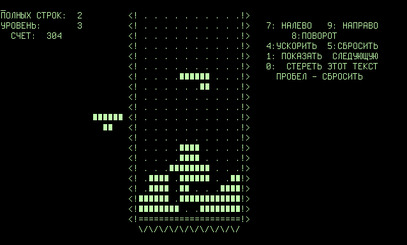
The game became so popular that Pajitnov enlisted the help of Vadim Gerasimov, a 16-year-old high school student with a knack for computer skills, to adapt the game to the IBM Personal Computer (released in 1981) and they were successfully able to do so, with Pajitnov adding color and a soundboard for the second version.
Although the Academy disliked the success that the game was getting, Pajitnov had a dream of exporting the game to the world. He got help from Victor Brjabrin to help with the publication of Tetris, where the first international copy of Tetris wound up with the Hungarian company Novotrade in 1986. The game would then be distributed all over Hungary and even reached Poland. It was in that same year and place that Robert Stein, international software salesman for the firm Andromeda Software (based in London, England) would be exposed to the popular puzzle game and he was so impressed by it that he faxed the co-creators directly for the license rights.
Here’s one thing to keep in mind, even a deal made over fax communication in the Western world is a legally-binding contract.
This is where things get hairy
Tetris would see its major American introduction in Las Vegas at the 1987 Consumer Electronics Show. After that and several negotiations, Stein gave the firm Mirrorsoft the European rights and the American rights to Spectrum Holobyte. With the rights in their grasp, Mirrorsoft released their version on the IBM PC in 1987 and Spectrum Holobyte version released in January of 1988. As a result, Tetris became an international phenomenon and became highly successful in both North America and Europe. The game itself was later ported to Amiga, Atari ST, ZX Spectrum, Commodore 64 and Amstrad CPC.
Despite the good fortune however, Stein was left with an issue. See, he sold the license of the game without actually owning it. After some more negotiating, this time with the central organization for importing/exporting of the Soviet Union Elorg (Elektronorgtechnica), the deal was made that Tetris would be made available for all current and future computer systems.
So where is Tengen in all of this?
In 1988, Tengen, a subsidiary of Atari Games, received the Japanese rights from Mirrorsoft. Tengen then sold the arcade rights to SEGA and the console version to BPS (Bullet-Proof Software). BPS would go on to create a version of Tetris for the Nintendo Famicom System (The NES in North America) in 1989.
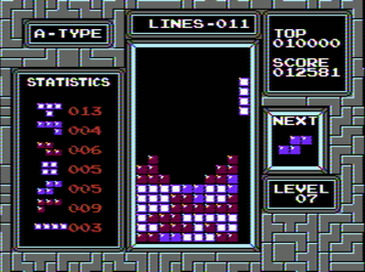
Tengen the subsidiary was founded in December of 1987 and was Atari Games’ response of needing a firm to oversee the console gaming side of the company. The only licensed games that were released under Tengen were R.B.I. Baseball, Pac-Man, and Gauntlet.
Yeah, the famous Tengen version of Tetris was actually unlicensed.
Under Tengen, Tetris went under the name Tetris: The Soviet Mind Game in May of 1989, although the arcade machine clones would read 1988.
So at this point, at least a dozen of different companies held rights to the Tetris game, with Stein in particular holding exclusive home computer rights. Nintendo would be ready to go with their introduction of the Gameboy in 1989.
AAAAAnd here’s where the problems arise.
When Henk Rogers, a Dutch video game designer and entrepreneur for Nintendo, was trying to obtain handheld console rights, he was unsuccessfully able to get in contact with Atari before trying to contact Stein. While relations were good at first, Rogers started getting suspicious that Stein had a breach of contract and traveled to the Soviet Union not only to investigate, but to contact the Elorg itself about handheld console rights.
What he ended up doing was getting involved in a meeting that contained Stein and Mirrorsoft manager Kevin Maxwell over rights with the Elorg president Nikolai Belikov present. When Belikov was shown a Tetris cartridge by Rogers, he was surprised as he believed that Tetris was only licensed for home computers. Had not Rogers defended that the rights were sold to Nintendo through Atari Games thanks to Stein, and Rogers being on good terms with Pajitnov, Nintendo would have been sued into oblivion for illegal publication of the game.
During the discussions, Belikov offered to null and void Stein’s rights to the game and instead offered Nintendo full rights to their home consoles and handheld consoles. Thanks to Rogers, Minoru Arakawa and Howard Lincoln, both Nintendo executives, signed off on the contract and Stein was left in the dust, losing all the console rights lost due to failing to read about the clause that defined the computer as “a machine with a screen and a keyboard” and not a console.
With this, Nintendo sent a cease-and-desist to Atari Games, demanding that they stop making the NES version of Tetris. However, Mirrorsoft was on Atari’s side, insisting that they still had rights. Nintendo didn’t give in on its stance however, and things got so out of hand that even the Soviet Union President Mikhail Gorbachev had to get involved on Mirrorsoft’s behalf.
Talk about pressure.
What then ensued was the legendary lawsuit between Atari Games and Nintendo, with Atari Games claiming that since the Nintendo Famicom (Nintendo Family Computer is its full name) had “computer” in the name and that it featured an extension input that can allow the console to be converted into a computer, thus it could not claim the rights as stated in the Elorg contract, since it was a classified as a computer.
(While the Famicom does have a third-party extension on the bottom right side of the console, that was usually there for third-party controllers at the time. Down below is the extension input in question.)
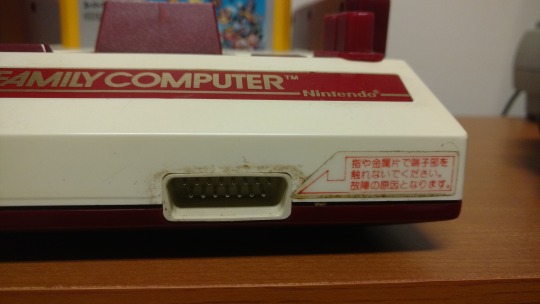
Pajitnov testifed on Nintendo’s behalf, saying that the contract only affected computers and nothing else, and Belikov, also on the side of Nintendo, argued the same stance.
Ultimately, the case was ruled in Nintendo’s favor as it was discovered that Mirrorsoft and Spectrum HoloByte never received explicit authorization for marketing on consoles. As a result, Atari Games withdrew the NES version of Tetris from the market by the hundreds of thousands.
So what about Pajitnov? Did he ever get any money out of this?
Nope.
See, because of the laws in place regarding ownership of property in the Soviet Union at the time, Pajitnov could neither patent or make money off of his product and he never received any of the royalties for Tetris, hence the existence of so many clones. Despite this, he remained optimistic, quoted saying “The fact that so many people enjoy my game is enough for me."
Don’t worry, the story does have a happy ending though.
Over the years since Tetris’ worldwide introduction, Pajitnov was routinely invited by journalists and publishers to speak and give interviews, giving him a reputation in the West. After being introduced to America for the first time in 1990 after receiving an invite to the Consumer Electronics Show in Las Vegas by Spectrum Holobyte, he began to study American culture by traveling to different cities of the United States. It was reported that he spoke of his travels often to his colleagues back in the Soviet Union. He was very proud of the game’s success and even called it “an electronic ambassador of benevolence.”
He and Vladimir Pokhilko, a friend of his, later emigrated to the West Coast of the United States in 1991 where Pajitnov settled in Seattle, Washington. He finally regained the rights to Tetris in 1996, exactly a decade as agreed by the Academy when the deal was made regarding rights, and in that same year, founded The Tetris Company to manage all rights after all other contracts had expired. It was then that he finally started making royalties for Tetris and also founded Tetris Holding after the dissolution of the Soviet Union. Tetris Holding is responsible for taking unlicensed Tetris clones off of the market.
Recently in 2005, EA purchased Jamdat, a mobile game company that Rogers founded in 2001 to manage the Tetris license. They then held a 15-year license for all mobile phone releases until April of 2020.
So there you have it, one of the most famous lawsuits in history about one of the most famous video games in history.
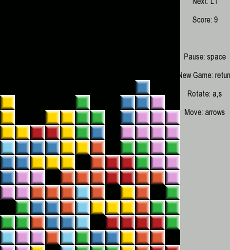
#whew!#talk about a loooooong history#hope you learned something new!#also yes that Famicom console in the third picture is actually mine#my voice!#friday special#retro gaming#gaming#irl#history#gif
13 notes
·
View notes
Text
The Seven
by Jacob Moses
We were seven kids housed within bricks and bushes on Manor Road.
We were a congregation in a sanctuary protecting our innocence and our dogs (RIP Red and Spock).
We had Congregation B'Nai Jeshurun on Martling Avenue and the Knights of Columbus on Maine Avenue.
We were aware that the hidden binder in Four Star Video contained pornography.
We were raised on penny candy, nickel arcades, dime bags, quarter drinks, and dollar sundaes at the Fill Your Belly Deli.
We knew the value of a half dollar.
We shared our space with soldiers protecting their tanks and weapons at the Staten Island Armory.
We were brothers and sisters sitting on the porch In the summer.
We were raised by each other’s parents.
We were the residents of a cardboard clubhouse.
We were dwellers of basements leading to a communal garage.
We were comforted by bricks.
We were within a facade of rose bushes planted from days of yore.
We were illuminated every Fourth of July by snaps, sparklers, Roman candles, and bottle rockets.
We were outdone by the fireworks displays across the street.
We were the guardians of the lightning bugs in the summer night.
We grew up with Billy Joel, Bonnie Tyler, John Lennon, Cyndi Lauper, Michael Jackson, Madonna, Whitney Houston, and The Police blasting on boom boxes and rotating on record players.
We didn't need Ralph's Italian Ices when we had cups of Marino's in the counter freezer.
We found solace in an Atari 2600 and a Commodore 64.
We were one of the few clans who owned the Colecovision ADAM computer.
We remember the greats: Space Invaders, Asteroids, Missile Command, Buck Rogers, Q-Bert, Burger Time, Galaga, Tetris, and every incarnation of Pac-Man.
We remembered when AOL was Q-Link.
We were too poor for MTV, so we had The Box instead (Music Television You Control).
We were really glad they made the Children’s Aid Society.
We could sing the Mount Airy Lodge theme effortlessly.
“All you have to bring
is your love of everything.
Beautiful Mount Airy Lodge.”
We watched Steampipe Alley on channel nine and knew the name Mario Cantone before Sex and the City.
We wondered if Teddy Ruxpin would sing along to Judas Priest.
We have no idea how many Lite-Brite pegs we were missing around our house.
We knew how to play outside.
We planted tomato gardens and swam in an inflatable wading pool.
We chewed Bazooka gum and collected the comic strips.
We felt the bubbles sting the insides of our noses when we drank Coca-Cola Classic.
We remembered how Doritos were sharp enough to open an envelope.
We were too young to remember the guy who stole a tank.
We are too old to turn back now.
We were the seven.
We were Jack, Nadine, Jesse, Alex, Laura, Lena, and Mitchell (RIP).
We were the seven who were never rich in our wallets.
We were the seven who won the jackpot.
#poetry#poetrycommunity#poetsofinstagram#poetsofnyc#poetrylovers#1980s#1980s aesthetic#1980s tv#1980s music#1980s icons
1 note
·
View note
Video
youtube
Video Games 1984 The fifth Arcade Awards are held, for games released during 1982-1983. Pole Position wins Coin-Op Game of the Year, Ms. Pac-Man wins console Videogame of the Year, Lode Runner wins Computer Game of the Year, and Q*bert wins dedicated Stand-Alone Game of the Year. For the second Golden Joystick Awards (held in 1985), Knight Lore takes Game of the Year. New Hardware in 1984 Apple Inc. announces the original, 128K, floppy disc-only, Macintosh. IBM releases the IBM PCjr in an attempt to enter the home computer market. It has improved sound and graphics over the original, business-oriented IBM PC, but is commercial failure. Atari announces the Atari 7800, a next-gen console that’s compatible with Atari 2600 cartridges. It is then shelved until 1986 due to the sale of the company and legal issues. Read more and vote for your favorite video games: https://ift.tt/2OkxV7z Games featured in this video: Excitebike Famicom Duck Hunt Famicom Hogan’s Alley Famicom Circus Charlie Arcade Return of the Jedi Arcade Tower of Druaga Arcade Ghostbusters c64 Montezuma’s Revenge Home Computer Boulder Dash Home Computer F1 Race Famicom Ice Climber Famicom Golf Famicom Tennis Famicom Dragon Buster Arcade Super Xevious Arcade Super Bagman Arcade Vulgus Arcade Star Force Arcade Antarctic Adventure Colecovision Lupin III Super Cassette Vision Pitfall II Atari 2600 HERO Atari 5200 & 8-bit HERO Commodore 64 Rescue on Fractalus Atari 8-bit Lode Runner Famicom Donkey Kong 3 Famicom Pinball Famicom Nuts and Milk Famicom Karateka Apple II Dragon Slayer PC-88 Ancient Art of War MS-DOS Beyond Castle Wolfenstein Home Computers Console Games 1984 Nintendo releases a conversion of their own Donkey Kong 3 for the Famicom/NES. Nintendo releases Ice Climber and Balloon Fight for the Famicom/NES. Activision releases Pitfall II: Lost Caverns, one of the last major titles for the Atari 2600. Each cartridge contains a custom chip allowing 4-voice sound. Computer Games 1984 Computer Video Games 1984: Alexei Pajitnov creates Tetris for the Electronika 60 in the Soviet Union. Elite, an influential wireframe 3D space trading game offering full six degrees of freedom and a then-unique open-ended design was released. Nihon Falcom releases Dragon Slayer, which lays the foundations for the action role-playing game genre. T&E Soft releases Hydlide, an early action role-playing game that features a health regeneration mechanic. Knight Lore by Ultimate Play the Game is released for the ZX Spectrum. It is the third title in the Sabreman series, but the first to use the isometric Filmation engine. Bullet-Proof Software releases The Black Onyx, which helps popularize turn-based role-playing games in Japan. Brøderbund releases The Ancient Art of War. It is a real-time tactics game and a precursor to the real-time strategy genre. Brøderbund also releases Karateka for the Apple II. Read more and vote for your favorite video games: https://ift.tt/2OkxV7z Arcade Games 1984 Arcade Video Games 1984: Namco releases Gaplus, the sequel to Galaga. Also, Namco releases the Tower of Druaga arcade game, a precursor to the action role-playing game genre. Data East releases Technōs Japan’s Karate Champ, laying the foundations for the one-one-one fighting game genre. Namco releases Pac-Land and lays the foundations for horizontally-scrolling platform games. Namco releases Grobda, a spin-off from Xevious. In addition, Namco releases Super Xevious and Dragon Buster, the latter of which is one of the first games to feature a life bar. Capcom releases 1942. Irem releases Kung-Fu Master and lays the foundations for the beat ’em up genre. Atari Games releases Marble Madness, their first game written in the C programming language and to use a 68000-family microprocessor. Gaming innovations 1984 Dragon Slayer lays the foundations for the action role-playing game genre Hydlide was an early action role-playing game that features a health regeneration mechanic Kung-Fu Master / Spartan X lays the foundations for the beat ’em up genre Read more and vote for your favorite video games: https://ift.tt/2OkxV7z Music featured in this video: Tower of Druaga Soundtrack https://www.youtube.com/watch?v=nr1YwmZ8jW0 Pitfall II Soundtrack https://www.youtube.com/watch?v=p9kgc7_yopM Star Force Soundtrack https://www.youtube.com/watch?v=ZZEbvpgDJyQ Marble Madness https://www.youtube.com/watch?v=HxAYJdLXgZo I do not own any rights for the music in this video! All rights for the music belong to the authors! by Retroconsole
3 notes
·
View notes
Text
World in Motion - AAA in review, 1990

My quest to play every game to have been #1 on the UK’s official games charts has taken me to the end of 1990.
After the dead space of 1989, anything had to be an improvement, and 1990 started out particularly brightly with a rush of new ideas across various formats. From there things took a less positive direction, but Shadow Warriors showed that even stale-seeming genres can still have something to offer.
All of 1990′s reviews in one place:
Chase HQ (Ocean, Amiga)
Rainbow Islands (Ocean, Atari ST)
Fantasy World Dizzy (Code Masters, Spectrum)
Operation Thunderbolt (Ocean, Commodore 64)
Italy 1990 (US Gold, Amiga)
Pro Boxing Simulator (Code Masters, Commodore 64)
Shadow Warriors (Ocean, Spectrum)
The Guardian Angel (Code Masters, Amstrad CPC)
Teenage Mutant Hero Turtles (Image Works, Commodore 64)
I also started a new irregular series of posts on the biggest games not to come under the realm of the charts. There were two Uncharted entries in 1990:
Solitaire (Microsoft, Windows)
Tetris (Nintendo, Game Boy)
Previously: 1984, 1985, 1986, 1987, 1988, 1989
Coming up next: sports (real and imagined), rodents (two different ones), and the Spectrum’s last hurrah…
4 notes
·
View notes
Text
8BIT Feelings

I saw a post by "Add to flag TL" ned/Freccia Azzurra on the Suggestion Forum. "Yeah, waiting for Atari and Commodore 64 version of BB" It was this message that got me moving. Hi man!
In 2017, I wrote a 12-page poem in per-zine format called "SOSYOSEY" (Socio-thing) on the Nintendo 'Game Selection Menu'. And I was creating other pixelart works. I think I missed these things so much!


It was a dream come true that Buzzerbeater was an arcade game in the 1980s-90s. When I started these designs, I thought of my childhood. I was a total arcade freak! Even Basketball and ATARI were the two biggest sources of entertainment for me in the same age range.
Memories come to my mind:
I am 10 years old, summer vacation, the sun is burning at noon, in the evening when the sun loses its effect, I will go to play basketball with my friends. So what should I do until evening? Of course, Super Mario, Bomberman, Flintstones, Tiny Toon, Adventure Island, Tank90, Ice Climber, Circus Charlie, Lode Runner, Pacman, Road Fighter, Balloon Fight, Excite Bike, Mickey Mouse, Mappy, Contra, Jewelry Tetris, Pinball, Donkey Kong … Oh! stop me! Of course, the things I will do until the evening are unlimited! A loop, but a great loop!
I'm an adult now, and I miss those days so much. I was very emotional while making these images and animation. I would really like to play Buzzerbeater with a look like this. I almost couldn't control myself and designed all the pages on the site! But no, it took me a week, and I'm tired :)
Enjoy… I hope there's some nostalgia talk on the forum.
1 note
·
View note